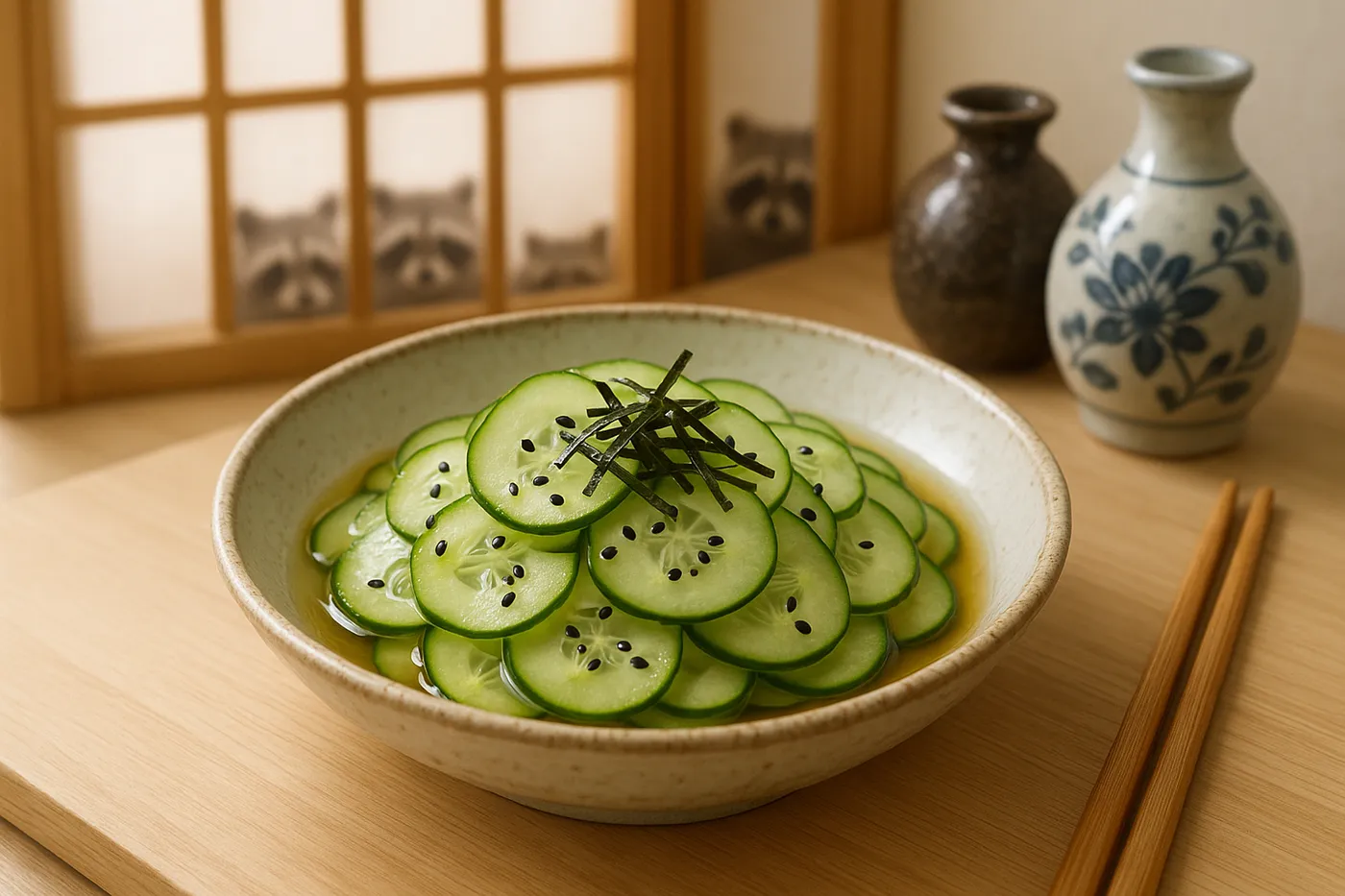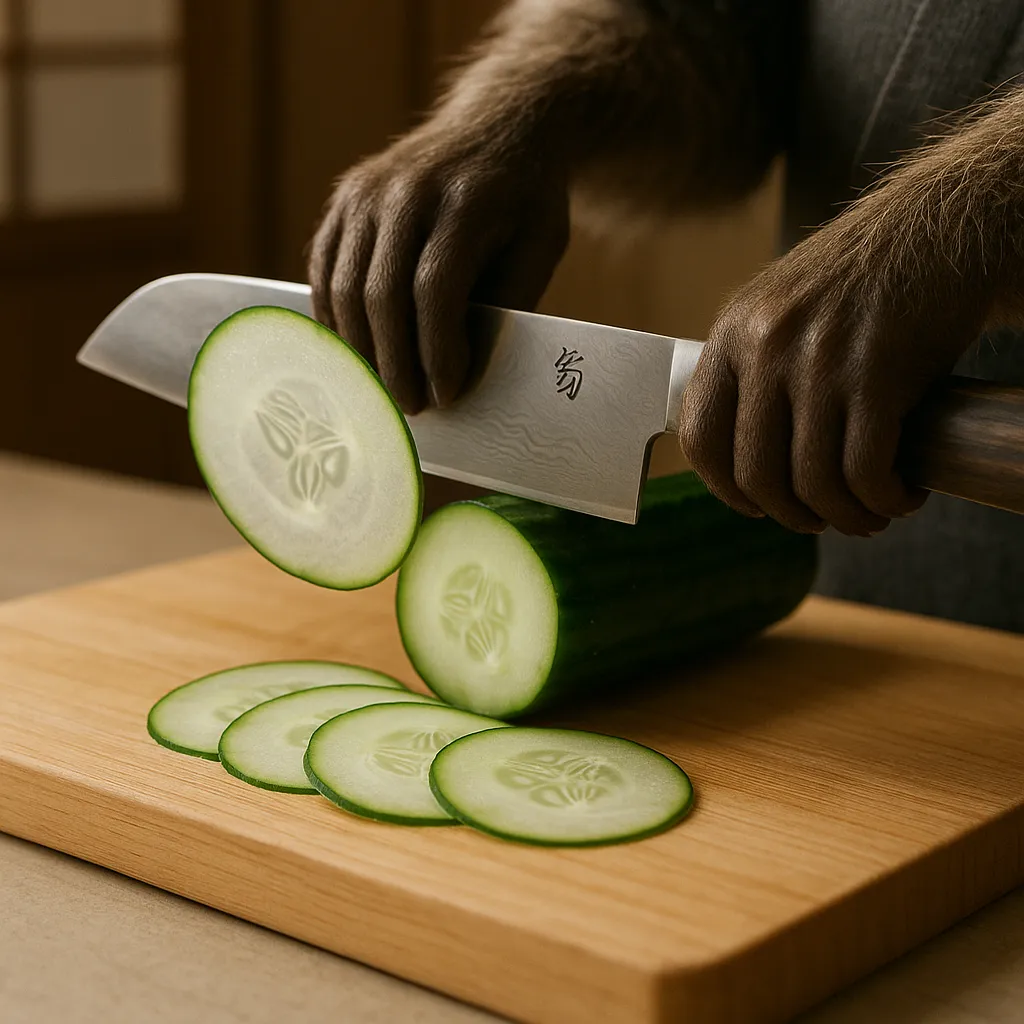side-dish
Japanese Cucumber Sunomono
Prep: 20 minutes
Cook: 0 minutes

Sunomono teaches you that technique can be more important than ingredients. Take cucumbers—something most people slice without thinking—and cut them with Japanese precision, dress them with perfectly balanced sweet-sour vinegar, and suddenly you have something that cleanses your palate, refreshes your spirit, and demonstrates why Japanese cuisine values restraint over excess.
The key is in the knife work. Cucumbers sliced paper-thin become almost translucent, allowing the dressing to penetrate completely while creating a texture that's both crisp and yielding.
Ingredients
🥒 2 large Japanese or English cucumbers
🧂 1 teaspoon salt
🍶 3 tablespoons rice vinegar
🍯 2 tablespoons sugar
💧 1 tablespoon water
🧂 1/4 teaspoon salt (for dressing)
🌿 1 tablespoon black sesame seeds
🌊 1 sheet nori seaweed, cut into thin strips (optional)
🦐 2 tablespoons cooked small shrimp (optional)
Instructions
Slice with precision. Using a very sharp knife or mandoline, slice cucumbers as thinly as possible—aim for 1/8 inch or thinner. The slices should be nearly translucent. Uniform thickness is crucial for even seasoning and texture.

Salt and drain properly. Place cucumber slices in a bowl and toss with 1 teaspoon salt. Let sit for 10 minutes—this draws out excess water and concentrates the cucumber flavor. You'll see liquid pooling in the bottom of the bowl.
Squeeze out moisture. Take handfuls of the salted cucumbers and gently squeeze them to remove as much liquid as possible. This step is essential—wet cucumbers will dilute the dressing and create a watery sunomono.
Make the dressing. In a small bowl, whisk together rice vinegar, sugar, water, and 1/4 teaspoon salt until the sugar completely dissolves. Taste and adjust—the dressing should be balanced between sweet and sour with a hint of saltiness.
Combine mindfully. Add the squeezed cucumbers to the dressing and toss gently. Let marinate for 5-10 minutes, allowing the cucumbers to absorb the flavors.
Garnish traditionally. Just before serving, sprinkle with black sesame seeds. Add thin strips of nori or cooked shrimp if using—these add color and texture contrast but aren't essential.
Serve immediately in small individual bowls. Sunomono is best enjoyed fresh and at room temperature.
Technique Notes
The mandoline is your friend here—it creates perfectly uniform slices that are difficult to achieve by hand. If using a knife, take your time and focus on consistency.
Don't skip the salting and squeezing steps. Japanese cooking often involves removing excess moisture to concentrate flavors and improve textures.
The sugar in the dressing should dissolve completely. If it doesn't, add a tiny bit more water and whisk until clear.
Seasonal Variations
Spring: Add thin slices of radish or young onion for bite.
Summer: Include thin slices of fresh ginger for heat relief.
Fall: Add julienned apple or pear for sweetness.
Winter: Use daikon radish along with or instead of cucumber.
Serving Context
In Japanese meals, sunomono serves as a palate cleanser between dishes or as a light start to the meal. It's particularly refreshing alongside rich foods like Perfect Sushi Rice dishes or grilled fish.
The small portion size is intentional—this isn't meant to be a substantial salad but rather a few refreshing bites that prepare your palate for what's coming next.
Storage Notes
Sunomono is best eaten within a few hours of making. The cucumbers will continue to release water and become less crisp over time.
If you must make it ahead, keep the dressed cucumbers refrigerated and drain any excess liquid before serving.
Remix Ideas
Wakame sunomono: Add rehydrated wakame seaweed for ocean flavor and different texture.
Octopus version: Include thin slices of cooked octopus for a more substantial dish.
Modern twist: Try adding thin slices of fennel or kohlrabi for different flavors.
Spicy kick: Add a pinch of shichimi togarashi (Japanese seven spice) for heat.
Perfect sunomono should make you pause and appreciate the elegance of simplicity. Each bite should be crisp, refreshing, and perfectly balanced—a reminder that Japanese cuisine's greatest strength lies not in complexity but in the precise execution of simple techniques that allow each ingredient to shine at its absolute best.









